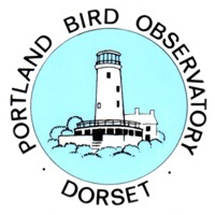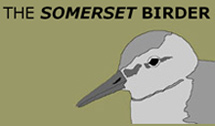Weekly round-up: 16 - 22 Apr 2014
Spring is well and truly here and although the weather wasn’t precisely what everyone was hoping for, the drift of overshooting migrants continued despite much of the country suffering from some blocking NNE’lys.
The four-day Easter weekend saw lots of news and lots of new action though and there was a little warmth to the wind too and those much improved conditions saw a neat couple of “first for the year” birds make themselves known, while significant padders dotted themselves around the country, offering up some sport for most.
Top of the heap though was a bird that all the official BOU listers can’t actually tick ~ but that shouldn’t take anything away from another exciting appearance of a form that has started to take us by storm …
Regular readers will know that your regular scribe has a certain “thing” when it comes to Northern Harrier.
Some of it comes through a deep involvement with the much-twitched (eventually) juvenile male in Norfolk a few winters ago. Some of comes through having a good buddy working on the specific status of the form. Some of it comes through being the sublime moment of a manic weekend working on the Superbowl in New Jersey in January, a “Silver Ghost” drifting over the MetLife Stadium. Some of it comes from the sheer grip value of being the only Cley lister who can “have it” when the split comes! But most of it comes from looking on in awe and wonder at full-on adult males and marvelling at the beauty of one of the finest raptors in the world.
…and this week, the appearance of a migrating Northern Harrier ~ and a male to boot ~ across the fields on Portland Bill (Dorset) during the morning of 21st are reason enough to pop this glorious species-in-waiting at the top of the list for the week’s rare birds.
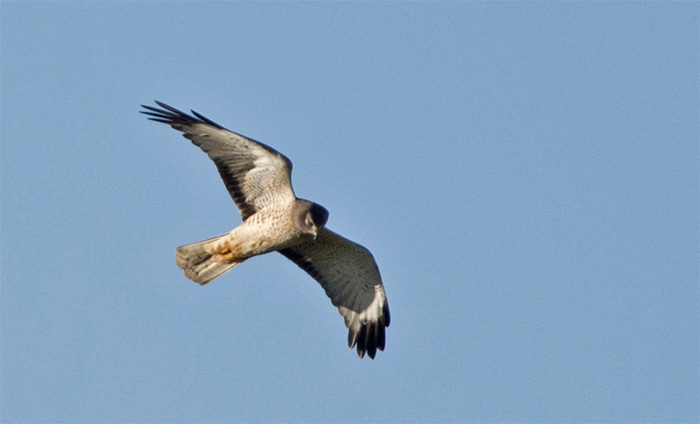
On his blog, finder and sole observer Peter Moore’s describes the events surrounding his discovery and popped up a few shots too. It is well worth a read too ~ being funny, honest and damn exciting all in one go…
http://petermooreblog.blogspot.co.uk
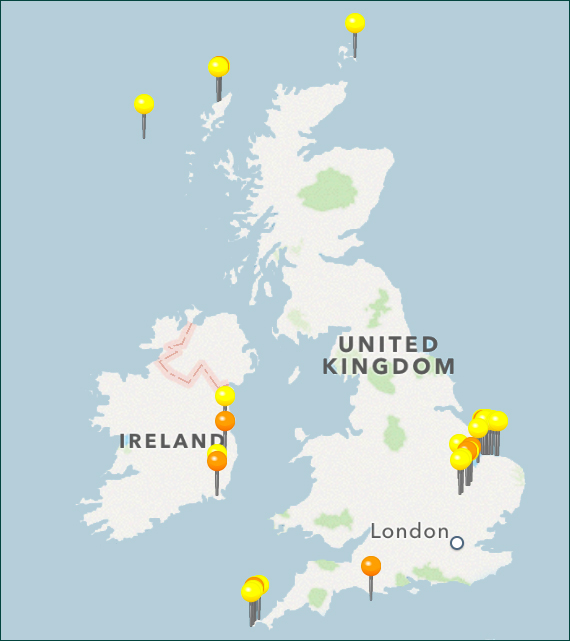
probable reports). Map generated using our smartphone app
Bird AlertPRO Get a free trial today
This passage bird didn’t linger and headed off and away to who knows where but there must be a chance that such a distinctive bird will be seen somewhere in Britain in the next day or so. But we thought that when last November saw a similar scenario being played out in Cornwall ~ a stonking male, re-identified from photos would surely hang around wouldn’t it? Sadly not and there’s every reason to think that we’re actually dealing with the very same individual here.
The Cornish individual, seen in the far west of the county, at Men-an-Tol on November 23rd presumably departed south and across the Channel within a day or so of being snapped. How far south it went is anyone’s guess, northern France maybe or further down into the European interior or even the Iberian peninsula ~ who knows ~ but the Portland bird of April 21st could quite conceivably have been that very same bird, heading north over the Channel, making an all-too-brief appearance in Dorset before tracking further north.
The rise and rise of Northern Harrier is one of the most remarkable elements of rare-birding in Britain and Ireland in the last five years ~ the astounding run of records from Tacumshin, the popular Norfolk individual, the male-on-the-moors in Durham along with birds on the Outer Hebrides, North Ronaldsay and Cambridgeshire means that after decades with just one accepted record, we’re heading towards double figures in super-quick time.
Someone will eventually manage to quantify exactly what’s been going on with the form in the past three or four years ~ until then let’s just hope the Portland belter hangs fire somewhere…
So generally speaking, the reviewer’s lot is generally a happy one (not always…just generally) and the dark arts of trying to be a smart-arse and homing in on what may well crop up in the week ahead is always a bit of a game that should be avoided but sometimes can’t be ignored and just has to be played.
At the tail end of last week’s review some facts and figures were touched on that were just too good to ignore ~the killer date of April 20th screaming “RARES” for the rooftops…
…and so it proved and three of the species listed did the biz and made themselves known on the date in question, dropping on to the pager like three red-ripe cherries on the old-time slots….
In came Alpine Accentor and Caspian Plover ~ just as predicted ~ tho’ the obvious fly in the predictor ointment was the fact that the former was actually discovered in Estonia with the latter (maybe even a re-find) was the second Swedish record of the much-desired and required mega-shorebird within just a few weeks (incredibly a third was found on April 21st...six vagrants in all so far this spring across northern Europe…).
There was another dinky arrival mentioned that all rocked up on the dot and a little closer to home too…and for our birding friends over the Irish Sea, it was a bit of a Corker too…
Sardinian Warbler isn’t generally a species that warrants making a headline appearance but this week’s male out on County Cork’s Dursey Island, on the magical date of April 20th is most certainly worthy of top billing.
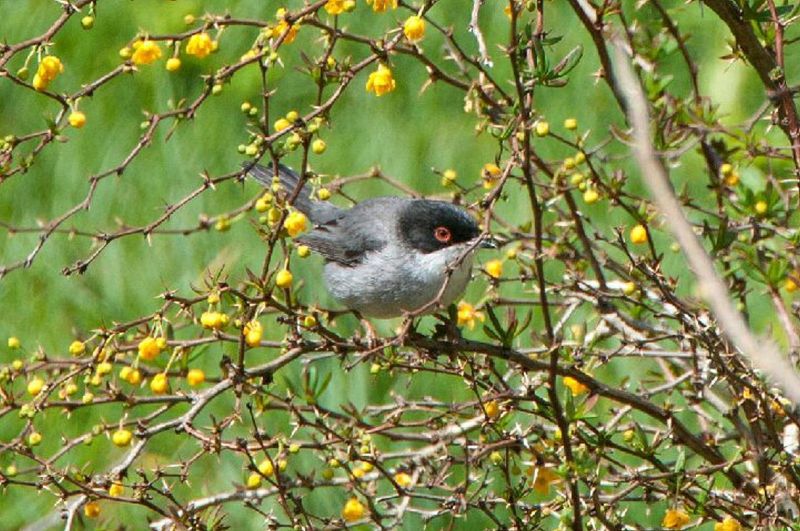
IRBC Status: A
Accepted Irish records by 2011: 2
Accepted records:
1993 Apr 14 - 21
Knockadown Head, Co.Cork
Cape Clear, Co.Cork
Found in the famous Scott’s Garden (many UK listers will know the site as being the same patch of ground that hosted the recent male Wilson’s Warbler) during the late morning, this lovely male Sard did the decent thing and gave holidaying Irish birders the chance to get to grips with it throughout the 20th and 21st and 22nd.
To date there have been just two previous records of this cracking little Sylvia in Ireland, both of them falling to Cork, both of them males and both of them appearing in April 1993 with the first found on Cape Clear Island on 10th (where it lingered for three days) and then number two was found on Knockadoon Head on 14th (that one remaining for eight days).
After something of a lull in the records (or certainly individuals that showed for more than just a few moments on any single given day, last year’s summering Sardinian Warbler in Scotland gave anyone who wanted to take it the opportunity to enjoy this lovely visitor from the Med ~ we’re on around 80 records for Britain now, but this week’s bird on Dursey is a rather more significant stat for the country it found itself in.
In the southwest, birders would have shocked themselves out of the Easter Egg induced cocoa-laced coma with the startling early-evening news of a Collared Pratincole on the open coastal plain of Devon’s Northam Burrows CP on 21st.
A few folks got down to the north coast in time to see the bird as dusk came down but the following day dawned with no sign. Fortunately, a few people stuck it out and just before midday, the bird was back again ~ though apparently distant for most of the time ~ before a two hour burst of cat & mouse that seemed to end with the bird heading up high and flying east, over nearby Instow.
BBRC Status: A
Accepted Devon records by 2012: 5
Accepted records:
1956 May 15 - 18 - Braunton
1945 Sep 12 - Morte Point
1945 Feb 21 - Mar 14 - Lundy
1851 Sep 07 - Two at Exmouth
Devon listers will be only too well aware of what a massive bird this is ~ it may have been the fifth one for the county but it is the first one in almost 60 years, the most recent prior to this week was seen at nearby Braunton in mid-May 1956. Four of Devon’s now-five Collared Pratincoles have been north coast individuals (including one on Lundy on the amazing date of late February 1945) while the south coast claims just one record, two birds at Exmouth in 1856.
There are also two accepted records of Pratincole sp., in Devon, one on Lundy in May 1987, the other at Newton Ferrers in May 1950 ~ this week’s bird also started out as a Pratincole sp., ~ while Black-winged (and Oriental) remains a blank.
For the record, April Collareds remain a startling rarity ~ off the 114 accepted occurrences to date, just six have come in April, most recently a bird that was tracked from Kent, to East Yorkshire and back in to Lincolnshire. There are no April acceptances of either of the other Pratincoles on the British List.
Cambridgeshire’s drake Baikal Teal sadly hadn’t become Norfolk’s drake Baikal Teal (certainly not up until the Easter Weekend had come to a chocolatey-finale) choosing instead to reside on the waters of the Ouse Washes, near Pymoor until 21st. It continues to edge ever-closer to a point where it actually needs to depart the scene ~ so ensuring a non-controversial entrance to Category A.
Keeping itself busy on the Outer Hebrides was the long-lingering Pied-billed Grebe on North Uist’s Loch nam Feithean until 19th. In Mayo, on Achill Island, the rarely seen adult Pied-billed Grebe was seen again on Sruhillbeg Lough on 16th ~ it was last reported there on November 15th last year, so it has either been somewhere else or it has been playing the most remarkably game of hide & seek.
Before departing the big birds of the week, we should note that the Loch Flemington American Coot made like Shane Warne and fell one short of the century mark ~ a stay of 99 days saw a departure sometime overnight on 14th-15th (seven of the 10 birds accepted to date have either departed in, or been found during assorted Aprils).

English White-billed Divers remain something of a treat and spring ones even more so, so it is nice to report two records away from the north of Scotland this week.
First came a bird at Spurn, seen heading out of the Humber, across The Warren and off out to sea during the early morning of 19th (heading back up river a little later). A probable was seen heading north off Flamborough later the same day ~ so perhaps one-in-the-same? This surprise fly-by becomes a new bird for Spurn, another super addition to one of Britain’s premier birding hotspots.
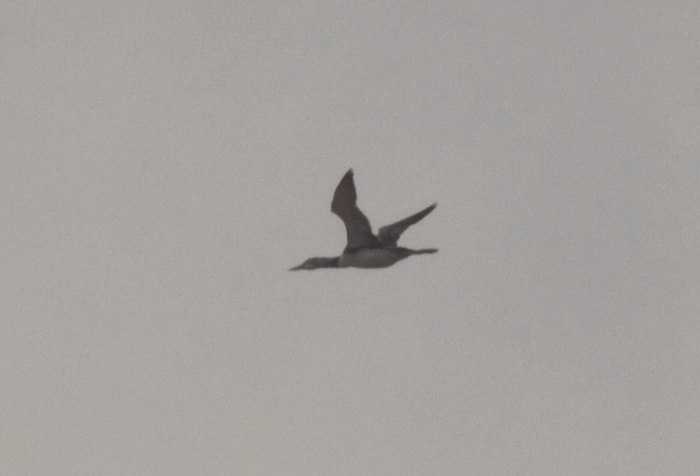
Bird two was noted along the south coast, seen from Birling Gap (East Sussex) on 21st ~ Sussex as a whole has just four accepted records of the species so far ~ falling between 1997 and 2007, the last of which spent 49 days off Selsey Bill from September to November 2007.
Away off to the north and in Aberdeenshire at least seven White-billed Divers were seen off Portsoy on 18th, when one was also seen on the Shetland Mainland, at Kirkabister. The following day saw a lone bird noted from Donegal’s Malin Head (two accepted records there, in May 2000 off Bloody Foreland and in October 2002 off Arranmore Island). Rounding things off, two birds at Port Skigersta, Butt of Lewis (Outer Hebrides) on 20th and another at Tiumpan Head (also on Lewis) on 21st.
Also in the waters of the Hebrides, an adult Long-tailed Skua was reported heading north past Ardvichar, on South Uist on 20th while there were six Pomarine Skuas reported through to the end of the long weekend ~ singles seen off Tacumshin (Co. Wexford) and Selsey Bill (West Sussex) on 19th with two past Splash Point (East Sussex), one off Mull (Argyll & Bute) on 20th and a further lone bird off the mullet (Co. Mayo) on 21st. The final day of the review week saw three pass Splash Point on 22nd.
Shetland Night Heron records are rather few and far between in recent years, so the appearance of a superb adult at the south end of the Mainland, at Reawick on 19th was going to be a popular bird for the local birders there.
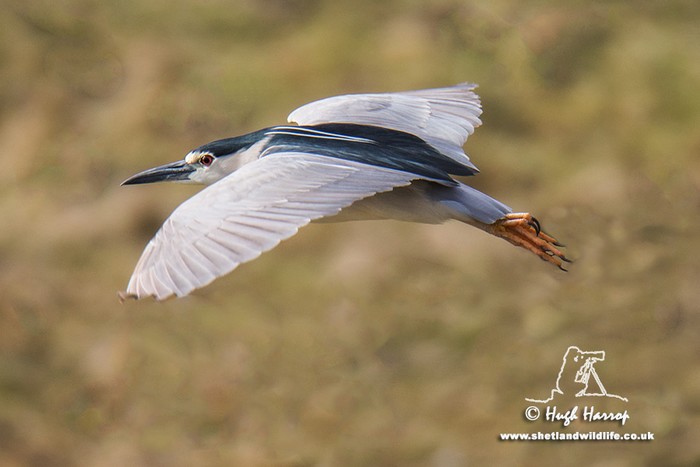
The bird showed well to the following day, appearing at nearby Quendale and Spiggie too (where it remained to 22nd) and is the first on the islands for a couple of years (one was seen in July 2012 at Northmavine) with the one prior to that appearing on Fair Isle in April 2008.
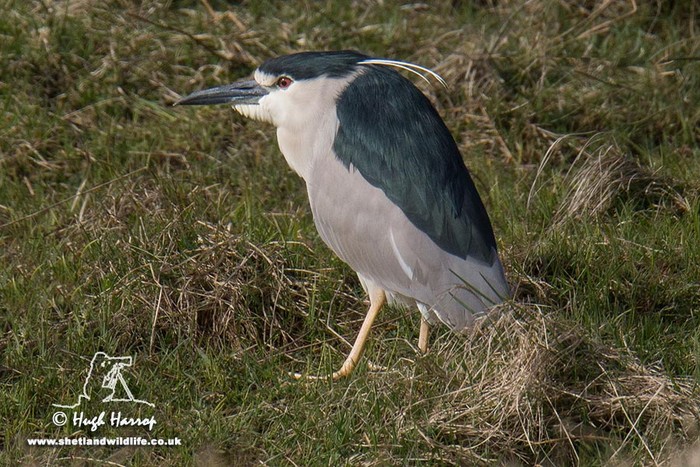
In Kent, a Purple Heron was found from the Hooker’s viewing ramp on 22nd ~ perhaps one of the breeding birds back again?

With increasingly diminishing returns, there were 14 Glossy Ibis to report from eight sites this week ~ with top spot going to Oxofrd Island NNR in Armagh, where three birds were seen on 19th. The Pymoor Two remained on the Ouse Washes (Cambridgeshire) to 19th at least and singles were logged (from north to south) on North Ronaldsay (Orkney) on 22nd, at Vane Farm RSPB, Loch Leven (Perth & Kinross) on 17th-20th, on the Warwickshire/Staffordshire border, at Middleton Lakes RSPB from 16th-22nd, still at Lowdham (Nottinghamshire) to 21st, at Hickling Broad NWT (Norfolk) on 20th-21st, at Weston sewage works (Somerset) through to 21st and in Cornwall, at Gillan Creek to 22nd. Ireland’s fourth was found at Cahore Marsh (Co. Wexford) on 21st with the fifth at Fermoy (Co. Cork) on 22nd.
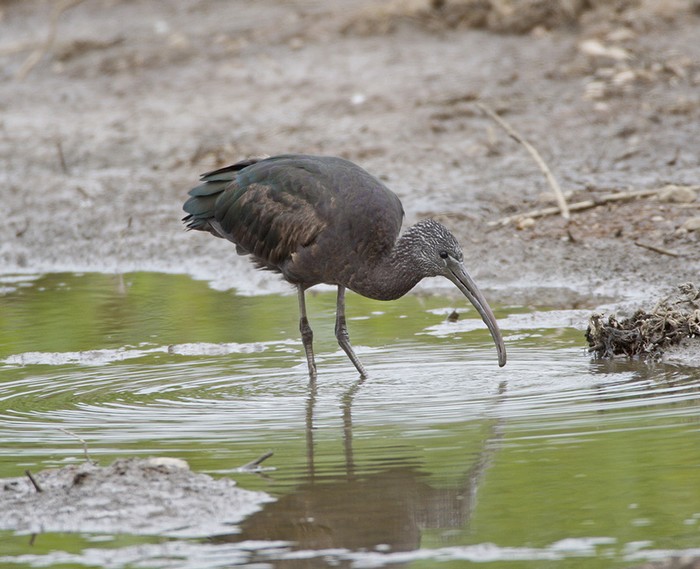
Not too far from the Ouse Washes Glossy Ibis was an Ouse Washes Cattle Egret ~ seen again around the RSPB reserve off and on throughout the week. Two more were reported flying over Isleworth (London) on 19th too.
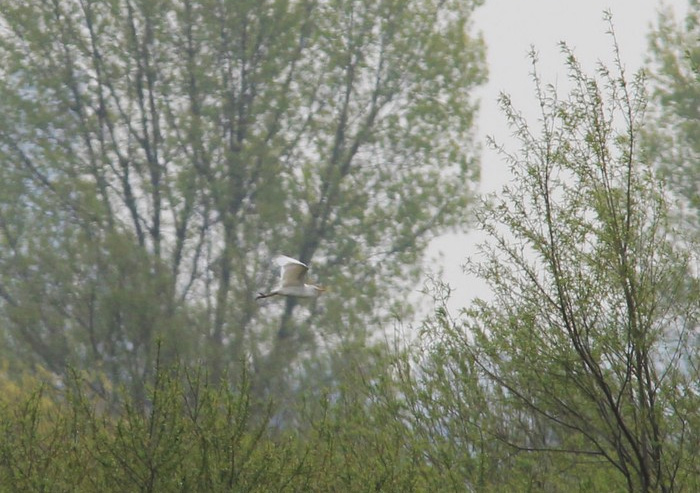
Whilst we’re loosely around the Washes, on the Norfolk side of the border, two Great White Egrets spent a few days around the Welney WWT reserve, present to 21st at least with one on the Cambridgeshire Nene Washes, at Eldernell on 20th. Back in Norfolk, a single Great White was reported heading over the A11 at Snetterton on 16th with further singles the same day again in Cambridgeshire (at Ellington) and still in Lincolnshire, at Frampton Marsh RSPB. The 17th saw birds head over the Lizard (Cornwall) and Maple Cross (Hertfordshire), with one in Derbyshire, at Ambaston GPs on 19th and at Huttoft (Lincolnshire) and St. David’s Airfield (Pembrokeshire) on 21st (with another reported from Bowling Green Marsh in Devon too). The maximum this week came (unsurprisingly) from the Somerset Levels, three seen at Ham Wall on 18th.
_neat.jpg)
Around 25 Spoonbills were logged through the week, with a highest count of seven coming from Dorset’s Brownsea Island on 22nd. Up to four singles were seen away from breeding grounds in Norfolk, up to three singles were noted in Lincolnshire and there were two at Cliffe Pools RSPB (Kent) on 21st. Suffolk scored two, while there were singles for Cornwall, Hampshire, West and East Sussex, London and County Down.
Common Cranes were dotted around far and wide this week ~ as well as birds in prime habitat in and around the Norfolk Broads (nine over Horsey on 16th, two at Strumpshaw Fen RSPB on the same date) and also the Cambridgeshire Washes (four at Eldernell on 18th) there were singles and duos spread countrywide.
Two were seen in Kent, at Sandwich Bay on 16th and Worth Marshes on 17th and were followed by a single bird in West Yorkshire (seen at Pugneys Country Park and Swillington Ings on 17th), two near Routh (East Yorkshire) also on 17th with singles the same day in Wicklow, again in East Yorkshire and also Lincolnshire (the latter two counties sharing the one bird, at Spurn and then Rimac).
The 18th saw two Cranes noted at Lochgilphead (Argyll) and then two were at Rutland Water (Leicestershire) on 19th when another was tracked from West Sussex, through East Sussex and on to Kent, ending up on Denge Marsh. Two birds were noted at Gosforth (Northumberland) on 20th and singles were then reported again in West Sussex (over Angmering), in Lothian (over Athelstaneford) on 21st and on Shetland (on Fair Isle) on 22nd. Leading the way though the four birds (of unknown origin) in Dorset, seen near Dorchester on 22nd.
What feels like three bona fide White Storks were found this week ~ one was seen Caernarfon (Gwynedd) on 17th before appearing later the same day on Anglesey, at South Stack RSPB. Two days later and the bird was back in Gwynedd, heading northeast over Bardsey Island, flying towards the mainland and was then seen near Caerhun (Conwy) on 21st. The second of the week was noted near the M3 in Hampshire, seen near Basingstoke on 20th and the third appeared in Cardiff (Glamorgan) on 21st ~ either or neither of which may have accounted for the White Stork seen in Oxfordshire (at Otmoor) then, two hours later, in Hertfordshire (at Tring) during the afternoon of 22nd.
There was also a report of a Black Stork too this week ~ one claimed circling near Llandeilo (Carmarthenshire) on 18th.
Three Spotted Crakes were also on the agenda over the past seven days ~ Scilly’s Lower Moors bird remained to 20th while new were birds singing at Grove Ferry NNR (Kent) from 18th and at the Ouse Washes RSPB (Cambridgeshire) on 19th. The week concluded with a trio of singers at the latter site ~ whatever happened to all those singing Littles of a couple of years ago?
Top of the pile in “Geese & Ducks” were the two Gray-bellied Brants (or perhaps more correctly Lawrence’s Brant) seen at Killard (Co. Down) on 20th. This perplexing taxa continues to excite and mystify in equal measure but just like the other scarce and rare current lumped forms of Brent Goose, this is a split in the making. And a damn rare one too…
Still not free of the “sub-species” tag (after all these years) is Black Brant and we’ve one to record this week ~ seen again at Levington Creek (Suffolk) on 21st while in southern Scotland, the “is it or isn’t it” real debate continued with the unringed Red-breasted Goose seen at Caerlaverock WWT (Dumfries & Galloway) on 2oth-22nd.
It looked as though we’d finally lost our remaining Snow Geese until news came of a white bird on Mainland Orkney, at Holm and another heading past Evanton (Highland) with Pink-feet, both on 21st.
Perhaps the most significant find of the week in Wildfowl World was the female Blue-winged Teal that was seen on pools at Sandwich Bay (Kent) on 22nd ~ despite being the 12th for the county it is the first seen there for almost 14 years, the most recent Kent record coming from Elmley on May 9th 2000.
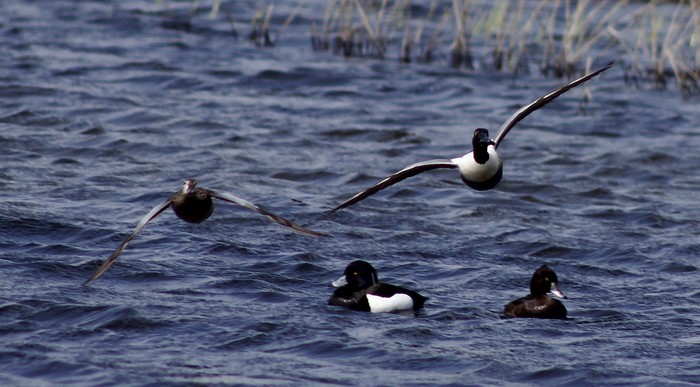
This week’s female is just the second record for the site too ~ the first (also Kent’s first) was a male that was found at Sandwich on April 14th 1970.
The drake Black Duck was noted once again on Sruhillbeg Lough, Achill Island (Co. Mayo) on 17th and 20th (having last been reported there in January).
The drake Ring-necked Duck was present around the Nene Washes (Cambridgeshire) throughout the week and three birds (including two drakes) were at the south end of Lough Beg (Co. Derry) on 20th. The same site also hosted a female Ferruginous Duck on the same date ~ a nice Aythya quartet…
On the Outer Hebrides, at Bornish on South Uist, a drake American Wigeon was seen on 17th and was presumably the bird seen in the area earlier this year. A second drake was discovered on Loch an Eilein, Tiree (Argyll & Bute) on 21st, moving to Loch a’ Phuill the following day.
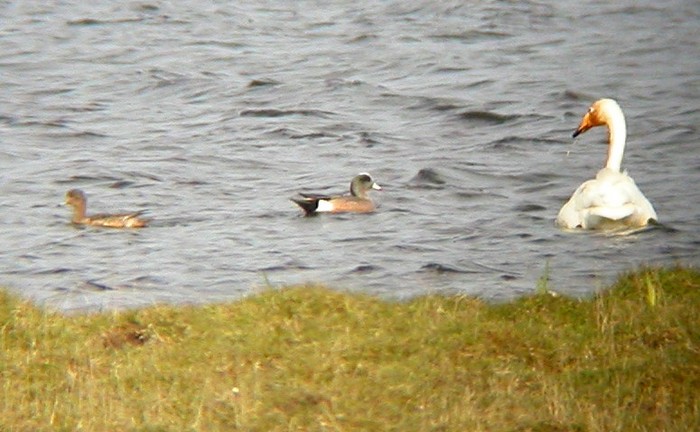
Four of the week’s Green-winged Teals were new birds ~ drakes found at Attenborough Pits NR (Nottinghamshire) on 16th-17th, near Holyhead (Anglesey) from 17th-20th, at Stocks Reservoir (Lancashire) on 19th-21st and Lough Beg (Co. Derry) on 21st were all fresh stock. Elsewhere, singles lingered at Pymoor (Cambridgeshire) to 16th, on North Ronaldsay (Orkney) to 17th and Quoile Pondage (Co. Down) to 19th.
On Shetland, the drake King Eider was still at Uyeasound, Unst to 19th while the queen Kings at Portnoo (Co. Donegal) and Fidra (Lothian) were both present to 21st at least.
As with almost every other duck species this week, there was a marked decline in numbers of Surf Scoters ~ three drakes noted including one north past Starr Gate, Blackpool (Lancashire) on 20th. The same date saw one noted as still present off the River Esk, at Musselburgh (Lothian) and on 21st, the third drake of the past seven days appeared in Highland, at Portmohamock.
Slightly overdue but almost bang-on-cue were the first confirmed Kentish Plovers of 2014 ~a male spent the day at Dawlish Warren (Devon) on 18th and this was followed by a female at Gibraltar Point NNR (Lincolnshire) on 19th.
The amorous pair of Black-winged Stilts were last noted at Essex’s Old Hall Marshes RSPB reserve on 17th while Hampshire’s wintering Nearctic duo of Lesser Yellowlegs and Long-billed Dowitcher appear to have taken their leave.
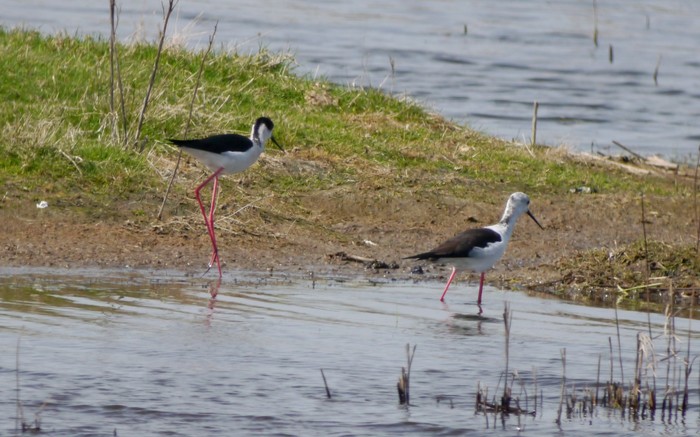
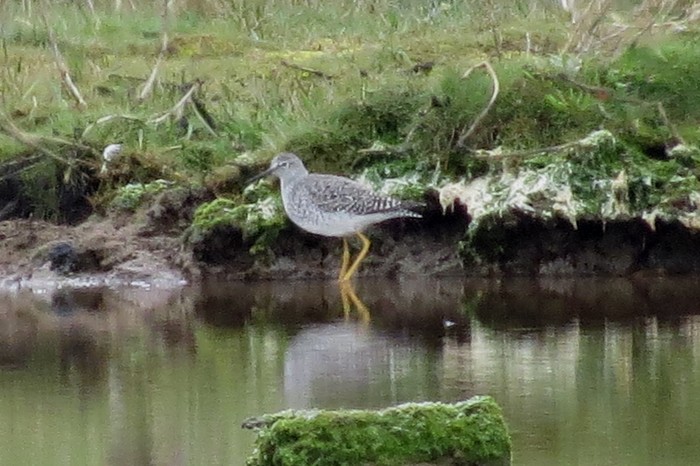
As they departed, the new arrivals have continued to appear in dribs and drabs ~ Dotterels included a trip-tastic dozen at Long Mynd (Shropshire) on 17th-19th. Further multiples were four at Felmingham (Norfolk) on 17th and four at Kessingland (Suffolk) on 19th and two at both Bradnor Hill (Herefordshire) on 18thand Uldale fell (Cumbria) on 20th. Single Dotterel were logged at St. Margaret’s-at-Cliffe (Kent) on 16th, Porthgwarra (Cornwall) and Munlochy (Highland) on 17th and Seaford (East Sussex) on 22nd.
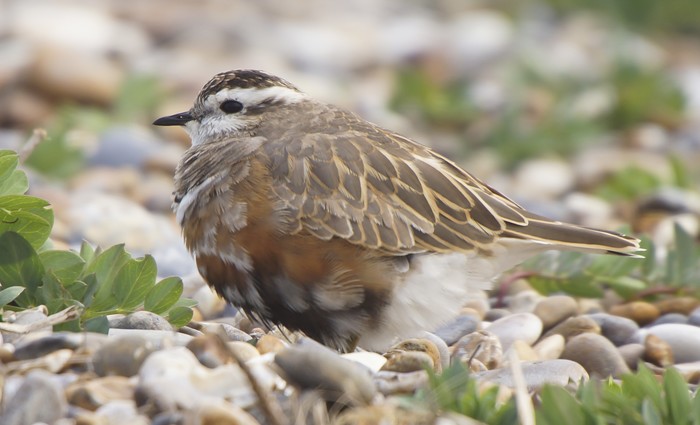
The presumed juvenile Thayer’s Gull was back at Bruichladdich, Islay (Argyll & Bute) on 20th ~ where’s that been hiding since March 11th? A possible Thayer’s was also reported from Barn’s Ness (Lothian) on 21st.
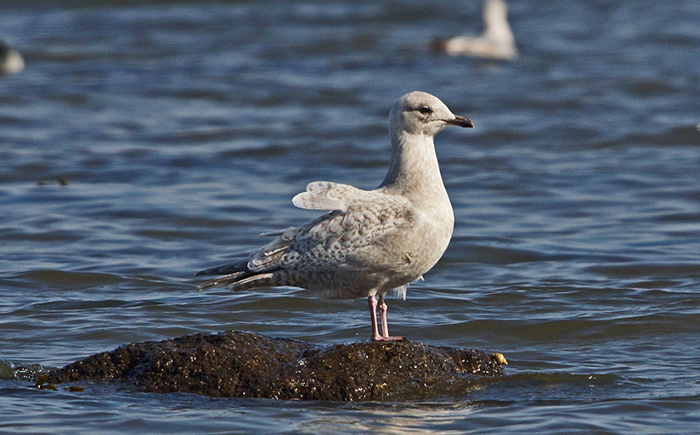
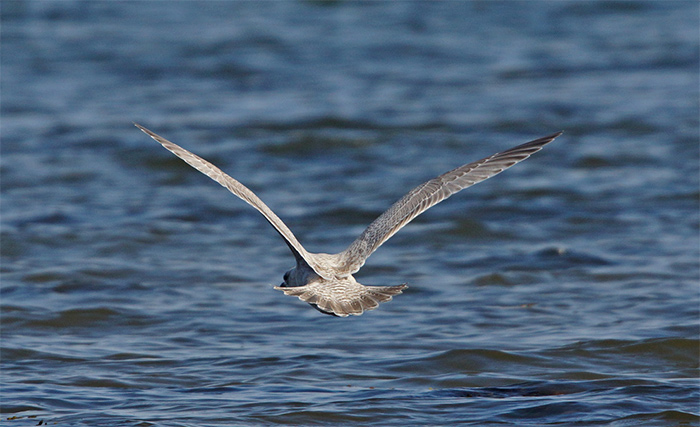
In Wales, a second-winter Franklin’s Gull was found on the river at Wernffrwd, near Crofty (Glamorgan) during the evening of 18th but wasn’t seen again ~ if accepted it will become only the third record for the county, the only previous records to date coming in October 1998 and July 1999.
The second second-winter Franklin’s Gull of the week was noted flying by Saltburn (Cleveland) on 21st ~ also a third record for the county, following on from the first in July 1977 and the second, a long-stayer through the summer of 1991.
Five Ring-billed Gulls were up for grabs this week ~ two in Argyll & Bute (a first-summer on Tiree, at Loch a ‘Phuill on 16th and a first-winter at Ardrishaig on 19th), two in Dublin, (two first-winters at Poolbeg on 20th) with an adult logged again at Belfast Lough RSPB (Co. Antrim) on 16th.
The only Kumlien’s Gulls this week were the juveniles on Fair Isle to 20th and still at Littlehampton (West Sussex) 21st. Numbers of Iceland Gulls were very similar to those recorded last week, rising every so slightly to some 48 birds across Britain and Ireland. Up to eight birds were seen around the Outer Hebrides, including three at Balranald RSPB, North Uist throughout the week and a minimum five were on Orkney, including three on Westray on 19th. Shetland also rattled in five while Highland and Dorset scored three each and ones and two were spread from Scilly to Shetland. There were also twos in both Donegal and Waterford, with lone birds in Antrim, Dublin and Mayo.
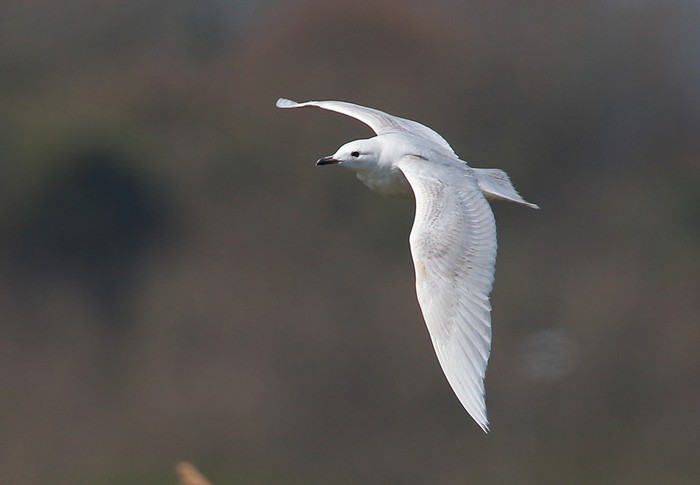
In contrast to Iceland’s, Glaucous Gulls dropped by over half of the total from last week’s to this ~ 40+ noted then, 25 now. The Hebrides was again leading the way, five or six birds there through the week, with two apiece for Mayo, Cornwall, Glamorgan and Highland.
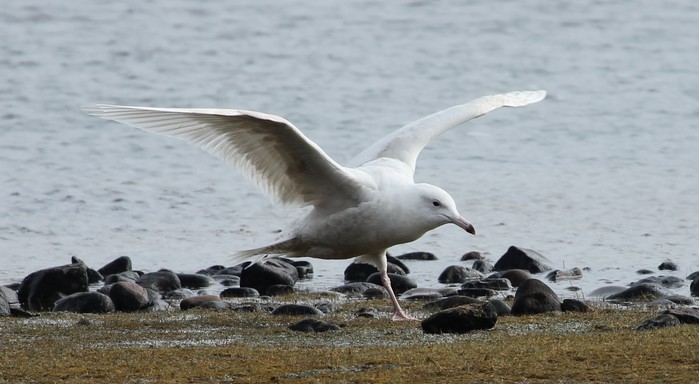
An adult White-tailed Eagle was seen heading across Nethy Bridge (Highland) on 18th with a Black Kite at Inverpolly Lodge ~ also in Highland ~ the following day. Earlier in the week, on 16th, a single Black Kites was seen at Glenthem (Lincolnshire) and was followed by reports from Marks Tey (Essex) on 18th and on Mainland Orkney on 22nd.
As the weather headed in to nice spring overshoot inducing conditions just ahead of the Easter Weekend (that’s only 245 days until Christmas pop-kids) a few hoped for new-to-2014 species managed to make it unscathed across the English Channel and Irish Sea…
On Scilly, a singing male Woodchat Shrike was found near Longstones on 20th (and was still present to 22nd). Another was also reported from Pembrokeshire, at St. David’s Head the same day and there was some belated news from the same site while we’re there ~ a male Subalpine Warbler sp., seen on 13th. Another Subalpine Warbler, this one a Western (cantillans) was found this week, seen briefly at Pagham Harbour LNR (West Sussex) on 21st.
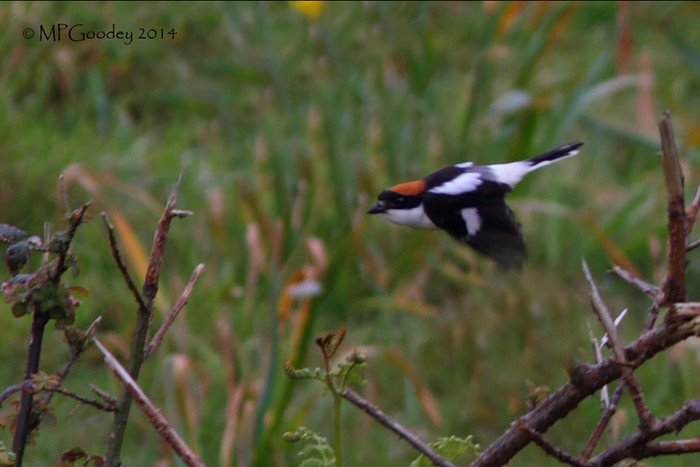
Back to the 20th a date that also yielded a particularly fine looking Short-toed Lark at Long Nab, Burniston (North Yorkshire) ~ a superb sandy-capped beastie that performed beautifully for much of the day but one which had gone by the dawn of Bank Holiday Monday.
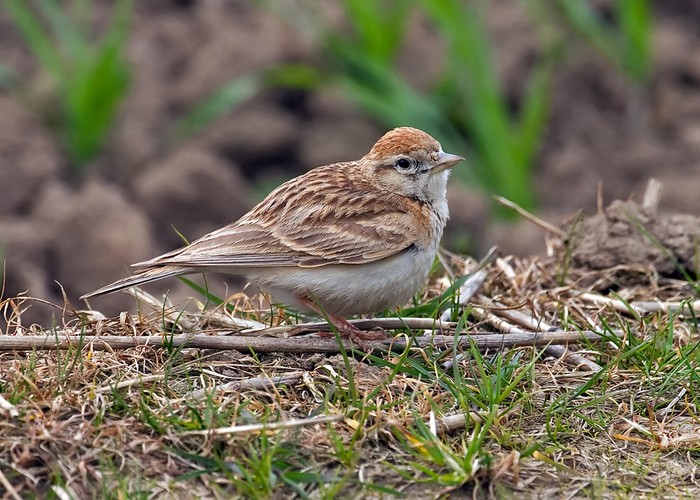
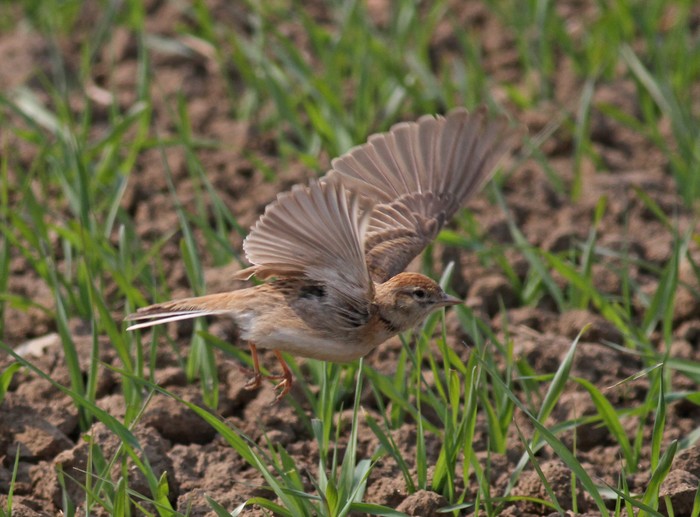
In Dorset, a heard-only Savi’s Warbler spent a few hours at Radipole Lake on 17th and on Scilly a Red-breasted Flycatcher was reported near the Dump Clump on St. Mary’s on 19th.
A female/first-winter White-spotted Bluethroat was a brief visitor this week, seen briefly at Grove Ferry NNR (Kent) on 18th with another reported at Howden (East Yorkshire) on 19th.
The same county held on to the popular (and now almost long-staying) Tawny Pipit at Flamborough Head (to 19th) and also a Richard’s Pipit at Easington from 18th-21st (a bird which had had a brief flirtation with potential Blyth’s status ~a species never recorded here in spring and one that boats no accepted records since 2007… ) while Norfolk’s infrequently seen individual popped up again at Gramborough Hill, Salthouse on 21st.
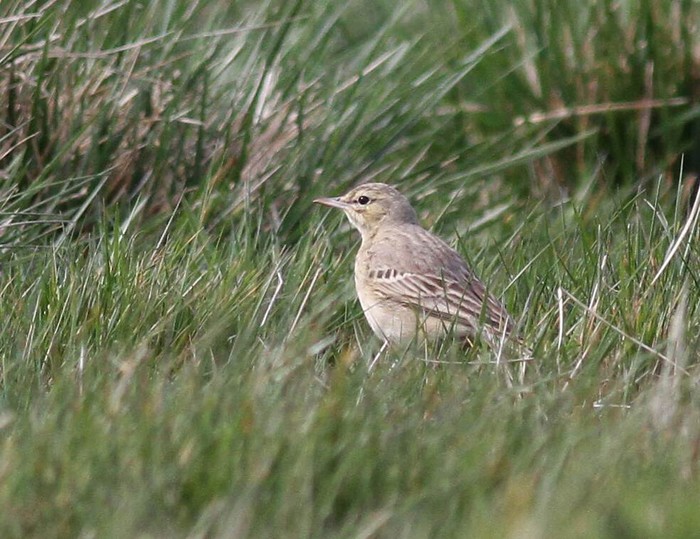
Nine Red-rumped Swallows included two birds together around the Cam Washes (Cambridgeshire) on 20th ~ what a run that county is having! ~ with singles at Portland (Dorset), Minsmere (Suffolk) and Horsey (Norfolk) on 17th, Pennington Marshes (Hampshire) on 18th-19th, Felixstowe (Suffolk) on 20th and at Prussia Cove (Cornwall) and Grove Ferry NNR (Kent), both on 22nd. Last week’s Scilly Bee-eater loitered on St. Mary’s to 16th before heading off to St. Agnes, Bryher and St. Martin’s to at least 17th.
A second Bee-eater was found on Dursey Island on 19th (just ahead of the Sardinian Warbler) while a single Wryneck was reported from Warwickshire, seen briefly at Lighthorne on 18th with a second for the week coming to the Farnes (Northumberland) on 21st. Shetland then popped in singles on 22nd ~ on Whalsay and Fair Isle ~ with one on Orkney’s North Ronaldsay and mainland singles at Anstruther (Fife) and in Suffolk, at Benacre.
On South Uist, the first Serin for the Outer Hebrides remained in gardens at South Glendale all week long while new birds included three singles on 17th ~ heading north over Hunmanby Gap (North Yorkshire), along the cliffs at Sidestrand (Norfolk) and over The Garrison, St. Mary’s (Scilly). A male Serin popped up in the Bird Observatory garden on Portland on 20th and a male headed east at Newhaven (East Sussex) on 21st with another in Swanage (Dorset) the same day. Dorset logged a third in the county when one flew over Hengistbury Head on 22nd.
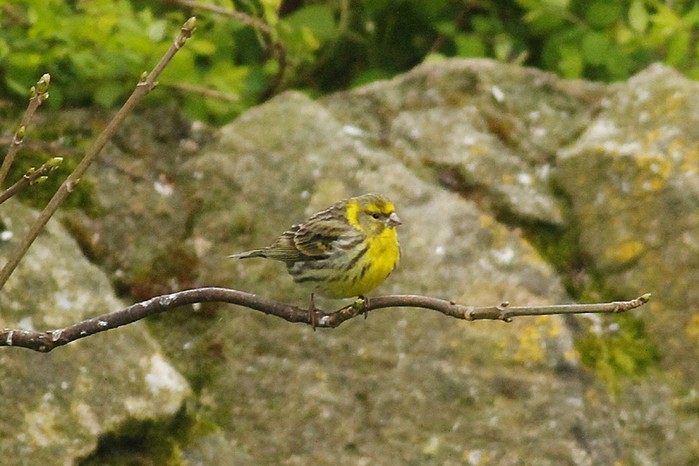
Last week was a busy old one where Hoopoes were concerned ~ up to 18 reported ~ but this week was a little lighter on the Upupa front, around 13 in all noted across the last seven days. The review period began on 16th with new singles at Treales (Lancashire) and Carrig-on-Bannow (Co. Wexford) while the bird at Snodland (Kent) was also still in situ (and remained so to 20th at least). A trio of new individuals came along on 17th ~ on St. Martin’s (Scilly), Sennen (Cornwall) and also at Priors Marston (Warwickshire).
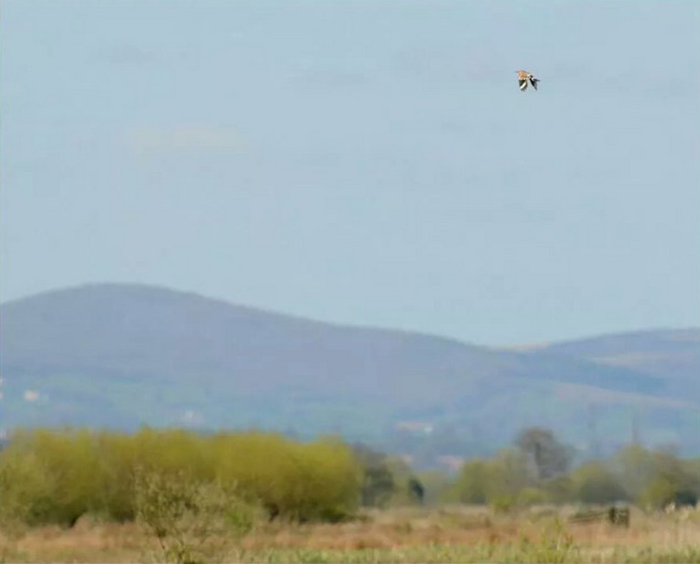
New in Highland were two singles on 19th, seen at Watton and Upper Dounreay, while Scotland’s third stuck it out near Stranraer, at Leswalt throughout the week while Norfolk’s first Hoopoe of the year was found at Thornham on 21st. The same date saw St. Martin’s second of the week appear and on 22nd further singles were found in Ireland at Mizen Head and Ballywilliam, both in County Cork and Cornwall popped in a second, at Lands End.
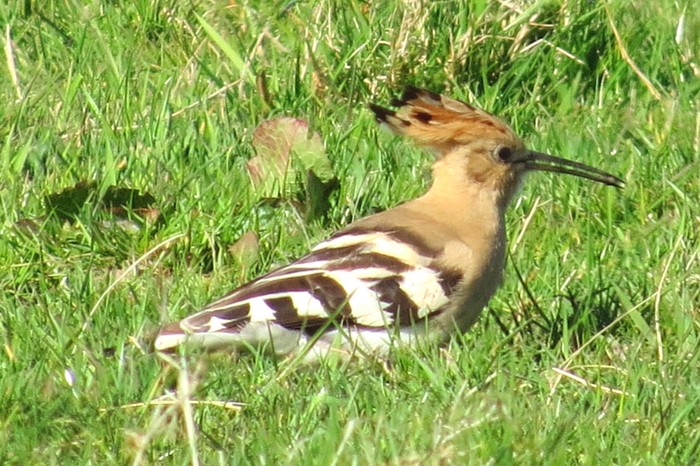
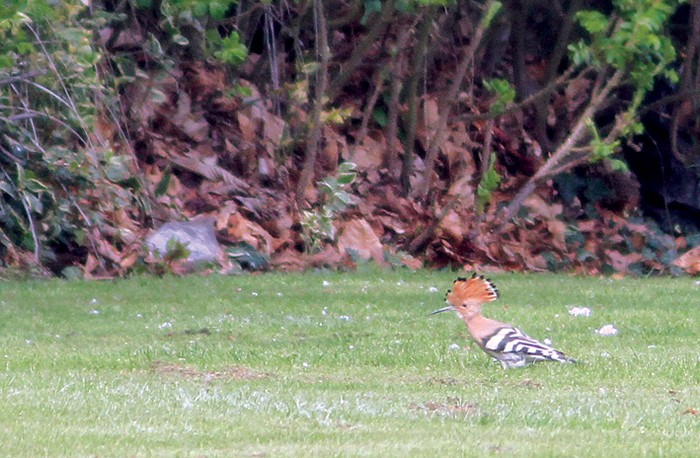
That just about wraps up our fresh spring goodies, so we’ll head along to remnant wintering bits and bobs. Suffolk’s Dusky Warbler was at Oulton Broad to 17th while Kent’s Hume’s Yellow-browed Warbler stuck it out at Dungeness to 21st. The Uffmoor Wood Yellow-browed Warbler lingered in the Worcestershire countryside until 21st as well, with a second bird reported in private garden sin Saltash (Cornwall) on 20th.
With the advancing season of Spring hurtling towards May already, it wasn’t much of surprise that we suddenly lost all our Great Grey Shrikes (there were 13 logged last week!) but there were a handful of Two-barred Crossbills to round things off ~ six were still at Broomhead Reservoir (South Yorkshire) on 17th (four of them males), three remained at Lynford Arboretum (Norfolk) to 20th (all males, two apparent adults and a first-winter) with the single single female at Leith Hill Wood (Surrey) lingered to 19th and the male at Hemsted Forest (Kent) was present to 21st. There was belated news too from Argyll & Bute, where a female Two-barred Crossbill was seen at Claddich on April 14th ~ a potential county first.
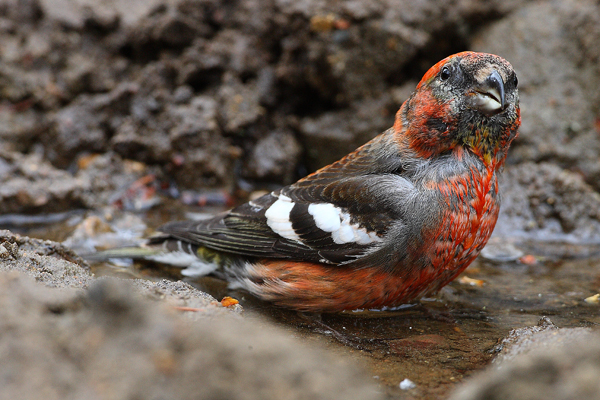
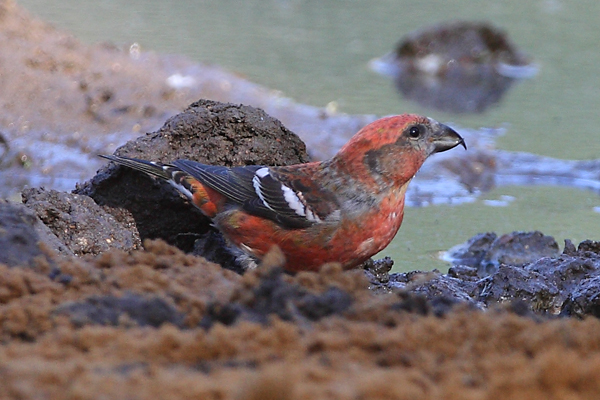
We must be on for an historic streaky juvenile or two soon surely?
Some sunshine, some April showers and mild temperatures lie ahead so there’s no reason to assume that migrants won’t stop trundling this way ~ light and variable winds (generally with a southerly airflow) on the cards, so it would be nice to hope that perhaps the first Red-footed Falcon, Whiskered Tern or even Citrine Wagtail may reach us soon.
There have been some spectacular arrivals in the week ahead in the days of yore ~ April 24th has produced no fewer than three British firsts, the Lundy Eastern Phoebe in 1987 and the remarkable double of the Pembrokeshire Moussier’s Redstart and Argyll & Bute Brown-headed Cowbird both on the same date in 1988.
Another Brown-headed Cowbird appeared in Northumberland on April 25th 2009, while April 26th has also been kind to the rarity finder and hunter alike ~ in 1981 Fair Isle scored the first Sandhill Crane for Britain; in 1983 Blacktoft welcomed back the returning Hudsonian Godwit; in 1997 Landguard birders uncovered an early Spectacled Warbler and in 2003, our first Taiga Flycatcher appeared in the nets at Flamborough.
…and rounding it off, Spurn added Black Lark to the British List on April 27th 1984 (tho’ it took rather longer to be accepted…).
But a nice sticking mainland Calandra Lark would prove popular ~ six of the 17 accepted to date have appeared in April, while that extra burst of Caspian Plover activity in Scandinavia makes that species ever-more-tantalising…
Mark Golley
23 April 2014
Special thanks this week to Ian Smith and Spurn Bird Observatory. Thanks also to our other contributors for their photos and videos.











